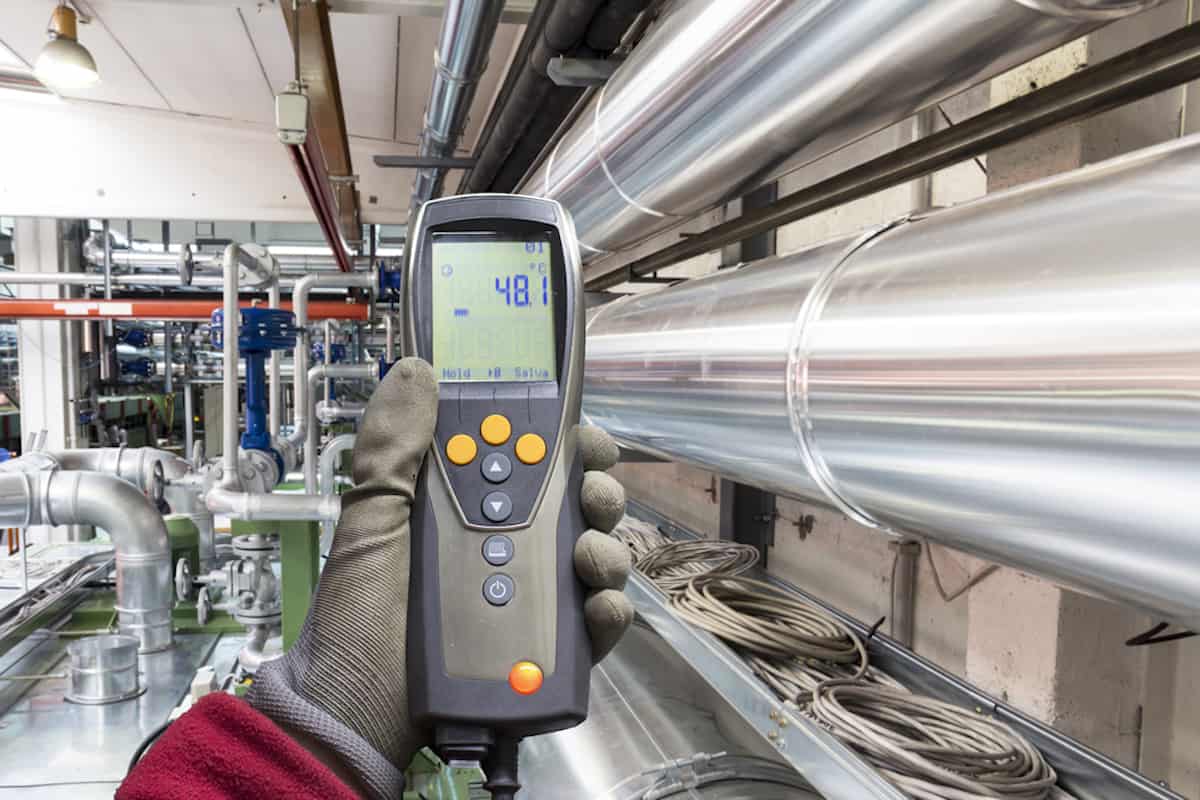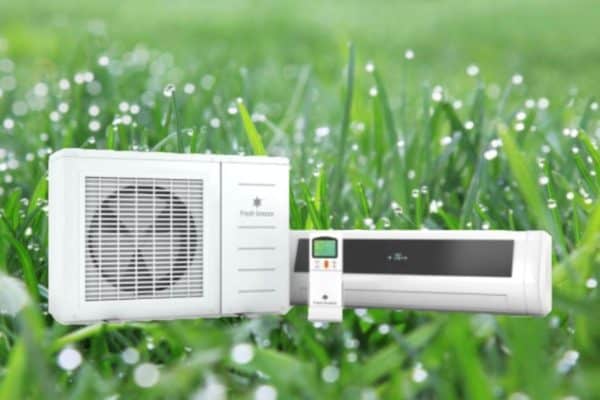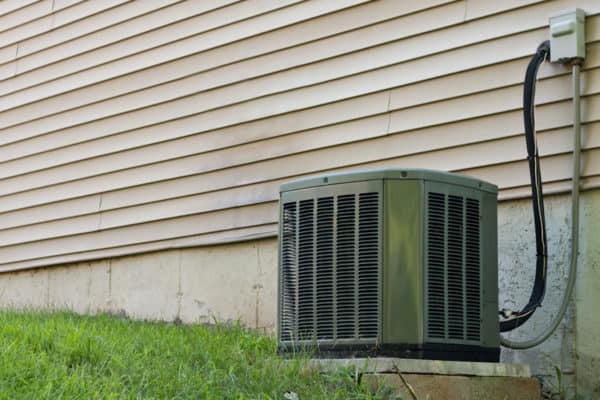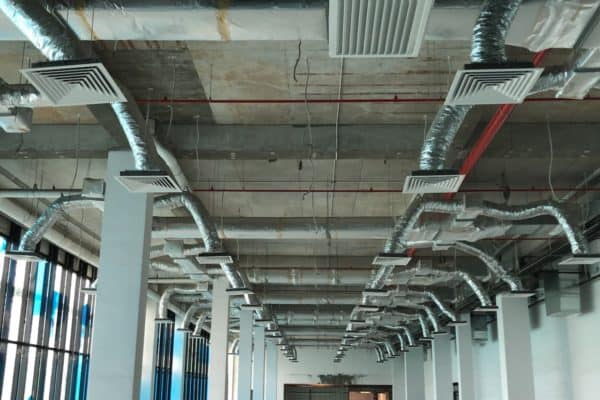What is the Delta T in HVAC?
Delta T is a very common acronym used in HVAC. Many HVAC engineers and technicians, especially the senior ones like to use Delta T when discussing the performance of various HVAC systems. So, what is the Delta T in HVAC?
Delta T (symbol ΔT) is the difference between two temperatures. Delta T is calculated by subtracting T1 by T2 where T1 and T2 respectively are usually the return and supply temperature. In HVAC, the Delta T is often used as a metric to quickly judge the performance of air conditioners and chillers.
Experienced engineers and technicians know whether there is a problem with the air conditioner or chiller based on the Delta T. Hence, it is very useful to understand the Delta T in HVAC.
How to Find Delta T in HVAC?
In HVAC, Delta T can be separated into two applications; a) residential air conditioners and b) commercial chillers.
For residential air conditioners, the Delta T often refers to the differences between the return air temperature and the supply air temperature.
To ease the calculation process, we can assign a short form to each temperature. For instance, the return air temperature is T1 and the supply air temperature is T2 or vice versa.
To find the Delta T, subtract the return air temperature (T1) by the supply air temperature (T2).
For example, a typical residential split air conditioner may have a return air temperature of 24°C (75°F) and a supply air temperature of 14°C (57°F). Hence, the Delta for the air conditioner is 10°C (18°F).
In terms of an equation, the Delta T can be calculated as follow:
Return air temperature, T1 = 24°C (75°F)
Supply air temperature, T2 = 14°C (57°F)
ΔT = T1 – T2
ΔT = 24°C (75°F) – 14°C (57°F)
ΔT = 10°C (18°F)
For commercial chillers, the Delta usually refers to the difference between the chilled water return temperature and the chilled water supply temperature.
Again, subtract the chilled water return temperature by the chilled water supply temperature to find the Delta T.
For example, a typical chiller may have a chilled water return temperature of 12.2°C (54°F) and a chilled water supply temperature of 6.7°C (44°F). As a result, the Delta for the chiller is 5.5°C (10°F).
Using the same formula, the Delta T of the chiller can also be calculated as follow:
Chilled water return temperature, T1 = 12.2°C (54°F)
Chilled water supply temperature, T2 = 6.7°C (44°F)
ΔT = T1 – T2
ΔT = 12.2°C (54°F) – 5.5°C (42°F)
ΔT = 5.5°C (10°F)
Air conditioners and chillers are mostly designed to operate under a fixed range of Delta T. If an air conditioner or a chiller has an odd Delta T (eg: too high or too low), it is a strong indicator that the air conditioner or the chiller has a problem.
In the meantime, I would like to inform you that you can learn quicker by getting my HVAC Begin (eBook) if you’re a beginner. But, if you have a year or two of experience, then I would suggest you consider my HVAC Basics (eBook). Nonetheless, I encourage you enroll in my HVAC Beginner Course: 10 Days to Become Competent in HVAC if you want to equipped yourself with a complete set of basic HVAC skills.
HVAC Beginner Course
Learn the most basics and foundational HVAC skills including cooling capacity calculation, equipment selection, duct sizing, pipe sizing, exhaust fan sizing, controls, electrical and more.
What is a Good Delta T Temperature?
Air conditioners and chillers should be operating at the designed Delta T. Otherwise, their efficiency and lifespan may be compromised.
A good Delta T temperature for residential air conditioners is around 10°C (18°F). However, many residential air conditioners have a Delta T of up to 24°C (32°F) during initial startup.
When first turned on, the supply air temperature of variable speed mini split air conditioners (inverter split air conditioners) can go as low as 10°C (50°F) while the return air temperature is around 28°C (82°F) as the room is yet to be air-conditioned.
After a while, variable speed air conditioners may ramp down their compressor speed as the room gets colder thereby increasing the supply air temperature and reducing the return air temperature. Consequently, the Delta T reduces.
On the other hand, a good Delta T temperature for standard commercial chillers is around 5.5°C (10°F). However, high-efficiency chillers may have a Delta T as high as 8°C (15°F). Such high-efficiency chillers are used for high Delta T chilled water systems.
Sometimes, the Delta T for the condenser of chillers is also useful. A good Delta T for the condenser water is around 5°C (9°F).
What Does a High Delta T Indicate?
High Delta T usually indicates better performance as the differences between the return and supply temperatures increase, and the heat capacity increases as well.
As mentioned earlier, chilled water systems with high Delta T chillers are more efficient. Based on the heat capacity formula (Q = mcΔT), the higher the Delta T (ΔT), the higher the heat capacity (cooling capacity).
From a different perspective, the Delta T can also be interpreted as the cooling capacity of air conditioners and chillers. After all, the greater the temperature differences meaning the greater the amount of heat being transferred.
Hence, when the Delta T drops, the cooling capacity also drops and this is not a good sign for the air conditioning system.
What Causes a Low Delta T?
As opposed to high Delta T, low Delta T is a sign of poor performance. Low Delta T is usually caused by the return side of air conditioners and chillers.
For commercial chillers, too high of a chilled water flow rate can lead to low Delta T. The chilled water flow rate must be controlled based on how much cooling is needed in total. If the control system is compromised, it’ll result in too much chilled water being supplied.
When the chilled water flow rate is higher than it is needed, the respective air handling units do not have sufficient heat load to increase the chilled water temperature across the cooling coil.
Consequently, chilled water leaves the air handling unit at a temperature lower than desired.
As discussed earlier, the standard chilled water return temperature should be around 12.2°C (54°F). If the heat load is insufficient, the chilled water return temperature may end up around 9°C (48°F) thereby reducing the Delta T from a standard 5.5°C (10°F) to a low 2.3°C (4°F).
Similarly, if the cooling coil of the air handling unit is dirty, the heat transfer efficiency will be reduced which also can lead to a low Delta T.
Another common cause of low Delta T is from the chiller condenser. If the chiller condenser is dirty or the condenser water flow rate is low, the heat transfer efficiency of the condenser is low. As a result, less heat is being rejected from the refrigerant thereby increasing the chilled water supply temperature.
As the chilled water supply temperature increases, the Delta T gets squeezed, resulting in low Delta T.
Low Delta T in residential air conditioners is often caused by a dirty filter or cooling coil that reduces the airflow thereby increasing the supply air temperature and ultimately leading to insufficient cooling.
How to Increase Delta T?
Since Delta T is the difference between the return and supply temperatures, increasing the return temperature or decreasing the supply temperature will increase Delta T.
For commercial chillers, the Delta T can be increased by increasing the chilled water return through the reduction of the chilled water flow rate. The lower the chilled water flow rate, the greater the heat transfer efficiency, the higher the chilled water return temperature and thus, the higher the Delta T.
Alternatively, the chilled water supply temperature can also be reduced to increase the Delta T. However, it is more difficult to do so as the chiller is more prone to freezing and the temperature of the condenser water entering the chiller is limited by the geographical-dependent ambient wet bulb temperature.
How to Find Q from Delta T?
The cooling capacity of a chiller can be determined from Delta T. Following is an example of how to find the chiller capacity (Q) from the Delta T (temperature differences):
Q = ρmcθ
where,
Q = chiller capacity, kW
ρ = water density, 1000 kg/m3
m = chilled water flow rate, m3/s
c = specific heat capacity of water, 4.2 kJ/kg°C
θ = chilled water temperature difference, °C
Given that:
Chilled water return temperature, T1 = 10.0°C
Chilled water supply temperature, T2 = 13.6°C
Chilled water flow rate, m = 180 m3/hr
Q = ρmcθ
Q = 1000 x (180 ÷ 3600) x 4.2 x (12.2 – 6.7)
Q = 1155 kW
Since 1 kW = 3412 BTU and 12000 BTU = 1 RT:
Q =1155 x 3412 ÷ 12000
Q =328.41 RT
So, if the Delta T is increased, the chiller capacity is also increased given that the chilled water flow rate remains unchanged.
Final Thought
In HVAC, Delta T is a good metric to quickly judge the performance of air conditioners and chillers. If the Delta T of a chiller is lower than the designed Delta T, it is a good idea to investigate the root cause of the low Delta T problem.
Delta T can be found by subtracting the return temperature from the supply temperature. High Delta T often indicates better performance and increasing the return temperature is one of the ways to increase the Delta T.
Lastly, consider my HVAC Begin (eBook) if you’re a beginner and you want to have a foundational knowledge in HVAC. But, if you have a year or two of experience, then I would suggest you consider my HVAC Basics (eBook). Nonetheless, I encourage you enroll in my HVAC Beginner Course: 10 Days to Become Competent in HVAC if you want to equipped yourself with a complete set of basic HVAC skills.
HVAC Beginner Course
Learn the most basics and foundational HVAC skills including cooling capacity calculation, equipment selection, duct sizing, pipe sizing, exhaust fan sizing, controls, electrical and more.
If you have anything to add (or ask) about this topic, leave a comment down below!









